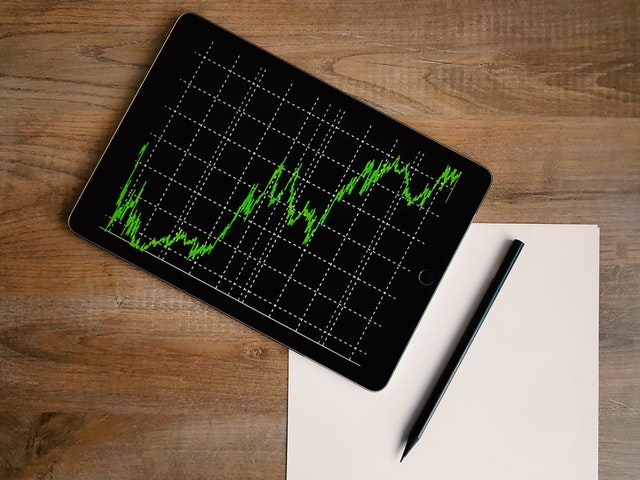5 Things You Need To Know About ETFs
Exchange-traded funds (ETFs) have taken the investing world by storm. By allowing investors access to a diverse range of asset classes across the stock market for relatively low-costs, ETFs are providing investors with a new array of possibilities for their investment strategies.
So what are exchange-traded funds and how can they impact you? Let’s take a closer look.
Basics of an ETF
ETFs are a collection of securities (stock, bonds, commodities.) pooled together in a single entity. They hold a diverse range of securities ranging from national to international stocks, bonds, and commodities across industries and specialties.
ETFs often track an underlying faction of a market index, investment holdings that represent a particular section of the financial market. Shares of these pools of securities are then available for sale and traded on major stock exchanges.
Unique to ETFs are the way that they are traded. An ETF is available for trade like an individual stock, on exchange. This means that an ETF can be traded all day while the market is open and active, allowing the price per share to fluctuate as they are bought and sold.
This characteristic separates them from a mutual fund that is only priced and traded once per day when the market closes, making an ETF a more flexible form of investing. ETFs issue and redeem shares on an ongoing basis which constantly changes the number of shares available. This practice keeps the market price of the ETF in line with its underlying securities.
Now that you have a basic understanding of how ETFs work, it is time to take a look at how they can impact your portfolio.
1. Increased flexibility
Since ETFs are traded like stock, they allow for more flexibility in trading shares. This feature gives the investor more control.
ETFs also offer many different investment opportunities such as:
- Bond ETFs: this could include a range of government, corporate, and municipal (state and local) bonds.
- Industry ETFs: this type of ETF focuses on securities for one or related industries such as oil, technology, gas, etc.
- Commodity ETFs: this type of ETF hones in on a particular product/commodity such as gold or natural gas.
- Market ETFs: the most common, this type of ETF tracks a specific index such as the S&P 500.
- Currency ETFs: this type of ETF allows investors access to invest in foreign currencies.
All of these spaces give investors more opportunities to invest in markets that they might not otherwise have had access to. Since there are so many different channels for investing in ETFs, it is important to take a look at the type of securities that will balance and enhance your portfolio to help you reach your goals.
2. Lower minimums
Another important difference between an ETF and a mutual fund is that ETFs have lower investment minimums, giving more people the opportunity to invest. With an ETF, the minimum is only based on the price of a single share. It is important to know that this market price can fluctuate anywhere from tens to hundreds of dollars depending on the ETF. Not all ETFs are structured and priced the same and there is a large range between costs.
A mutual fund operates in a different way. The minimum for a mutual fund isn’t based on the price per share of the investments, rather it is a flat fee. As an example from Vanguard, most of their mutual funds have a $3,000 minimum.
3. Diversification
Since ETFs grant investors access to securities across multiple categories and industries, they are often seen as excellent ways to add diversification to your portfolio. Diversification is an important way to manage portfolio risk by balancing asset classes throughout different industries and commodities.
Even though ETFs can be used as a method of diversification, that isn’t always the case. Some ETFs hold securities that are aligned across one industry, market or commodity which might not provide the range you are looking for. If, for example, you invest in an industry-specific ETF, you may have securities that align with one type of industry such as oil. If that industry isn’t doing well, then your entire ETF will feel the burden of that.
Before you select an ETF, be sure that you know the type of securities it holds and how that fits into your diversification needs.
4. Lower average costs
One of the main reasons why ETFs are such a popular form of investing is that they often have much lower costs for investors, opening up the market to people who didn’t think they could afford to invest.
Instead of purchasing $100 for a share in an individual stock, for example, that $100 for a share in an ETF will give access to a variety of stock and underlying securities. This gives investors the ability to have access to multiple stocks at a lower cost than buying each stock individually.
ETFs require just one transaction to buy and one to sell, cutting down on broker fees and commissions. Many ETFs have fewer individual trades which also helps to minimize broker commissions.
Since most ETFs track an index, they typically have much lower expenses. This passive management makes the cost to manage the fund much lower since the broker isn’t as involved in buying and selling shares/holding within the fund.
But that isn’t always the case. Some ETFs are actively managed, increasing the number of trades, commissions, and therefore the overall cost of the investment channel. Be sure that you know how your ETF is managed and weigh the pros and cons to determine which style will be best for your needs.
5. Tax-friendly
ETFs are, in general, a more tax-efficient form of investing when compared to a mutual fund. For starters, the investor has more control over when their actions will trigger capital gains tax, unlike with a mutual fund.
Nearly every year, investors of a mutual fund receive their share of the fund’s transactions (buying and selling of shares) in the form of a capital gains distribution. This distribution can be cashed or reinvested in the fund. But no matter which option is selected, the investor is responsible for paying capital gains tax on those distributions. This brings about regular capital gain tax whether the investor sells shares or not.
As you start to think more about ETFs, we encourage you to ask yourself a couple of questions:
- What is the ETF you want to invest in designed to achieve?
- How does that product align with your goals as an investor?
Your portfolio should reflect your values and goals for the future. Take some time to think about what those goals are and how employing different investment strategies can help you reach those goals in an effective way.
It is our goal at Legacy Wealth to help you plan and reach your financial goals and investing is often a big part of that picture. Investing in a way that makes sense for you and your finances is one way we help our clients reach their goals. Schedule a 15-minute call with us to learn more about ETFs and if it will be a good fit for your investment strategy.





Leave a Reply
Want to join the discussion?Feel free to contribute!